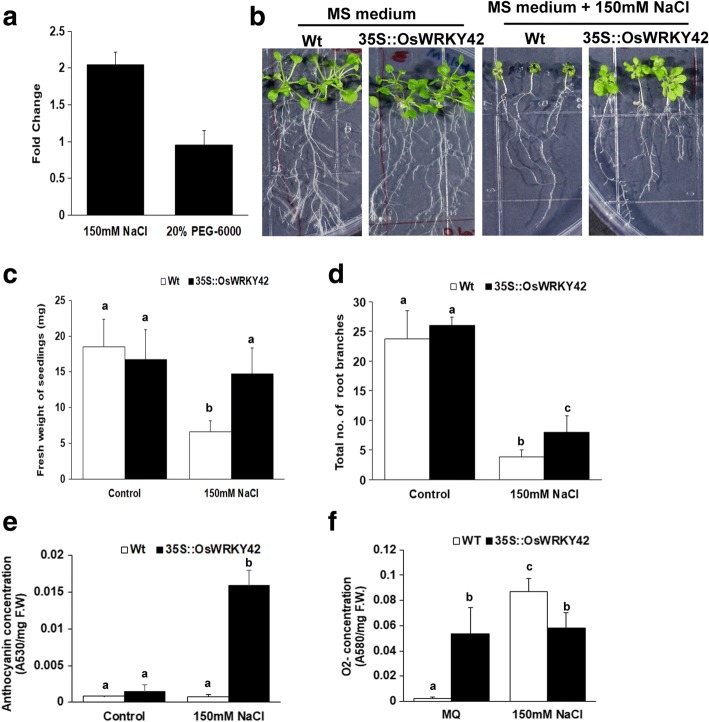Fig. 4.
Ectopic expression of OsWRKY42 enhances tolerance to salt stress in Arabidopsis transgenic lines. a. One-week-old TN-1 rice seedlings (n = 10) were dipped in each of the following: 150 mM NaCl solution, 20% (w/v) PEG-6000 and mock (water). Leaves were harvested 12 h post treatment and processed for qRT-PCR. Relative fold change was calculated over water treated samples and OsGAPDH was used as an internal control. b. For assaying salt tolerance, one-week-old Arabidopsis seedlings that are either constitutively expressing OsWRKY42 (35S::OsWRKY42) or wild type (Col-0) (n = 20) were grown on MS agar medium with or without NaCl (150 mM, Merck). (c-d) The total fresh weight and number of root branches of individual seedlings was quantified on the fifteenth day post-treatment. e. For anthocyanin estimation, three weeks old Arabidopsis plants (wild type and 35S::OsWRKY42) were treated with either 150 mM NaCl or water. On the fifteenth day post treatment, leaves (n = 3) were collected and anthocyanin was extracted in acidic methanol. Anthocyanin was estimated using a spectrophotometer and the anthocyanin content is expressed as absorbance per milligram of fresh weight (F.W). f. ROS estimation was done in detached leaves from adult plants. Leaf discs (n = 15) of either wild type or 35S::OsWRKY42 lines were placed on sterile filter papers soaked in MS solution either with or without NaCl (150 mM). 12 h post treatment, the leaves were stained with NBT. The O2− content was estimated spectrophotometrically and is expressed as change in absorbance per milligram of fresh weight. Leaves from three different plants were used as replicates. The data was analysed using one-way ANOVA and the Tukey-Karmer honestly significance difference test. The alphabets above the bar indicates significant difference with p value < 0.05. Presence of the same alphabet above the bar indicates that no significant difference was observed. The experiments were repeated in three independent 35S::OsWRKY42 transgenic lines

